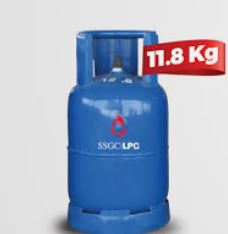Introduction:
In the world of engineering and manufacturing, certain components quietly perform essential roles, often without receiving the recognition they deserve. Among these unsung heroes is the cylinder body, a fundamental element in various machinery and systems. In this comprehensive guide, we embark on a journey to explore the intricacies of the cylinder body, uncovering its significance, design principles, and diverse applications across industries.
Unveiling the Cylinder Body:
The cylinder body serves as the structural backbone of hydraulic and pneumatic cylinders, providing support, stability, and containment for internal components. While its appearance may appear simple at first glance—a hollow tube with precise dimensions—the cylinder body undergoes meticulous design and manufacturing processes to meet stringent performance requirements.
Design Principles:
The design of a cylinder body is guided by principles of strength, durability, and efficiency. Engineers consider factors such as operating pressure, load capacity, environmental conditions, and space constraints to determine the optimal dimensions, materials, and construction techniques. The shape and configuration of the cylinder body may vary depending on specific application requirements, with options ranging from standard round tubes to custom-shaped profiles.
Materials and Construction:
Cylinder bodies are typically constructed from high-strength materials such as steel, aluminum, or composite materials. The choice of material depends on factors such as weight, corrosion resistance, and compatibility with operating conditions. Advanced manufacturing techniques, including CNC machining, honing, and surface finishing, are employed to achieve precise tolerances and surface quality, ensuring smooth operation and minimal friction.
Sealing and Integration:
Sealing is a critical aspect of cylinder body design, as it prevents leakage of hydraulic or pneumatic fluid and maintains pressure integrity. Various sealing methods, such as O-rings, seals, and gaskets, are employed to seal the interface between the cylinder body and end caps or other components. Additionally, integration features such as mounting brackets, ports, and sensor provisions may be incorporated into the cylinder body to facilitate installation and connectivity within a system.
Applications Across Industries:
The versatility of cylinder bodies extends across a wide range of industries and applications. In manufacturing, they power hydraulic presses, actuators, and robotic arms, enabling precise control and movement of machinery. In construction and mining, they operate hydraulic cylinders in excavators, bulldozers, and cranes, providing the force necessary for heavy lifting and earthmoving tasks. In aerospace and automotive applications, they control landing gear, flight control surfaces, and vehicle suspension systems, ensuring safe and reliable operation.
Innovation and Future Trends:
As technology evolves, so too do the capabilities of cylinder bodies. Innovations such as lightweight materials, advanced coatings, and integrated sensors are enhancing performance, efficiency, and reliability. Additive manufacturing techniques, such as 3D printing, are also revolutionizing cylinder body production, enabling complex geometries and rapid prototyping. Looking ahead, the future of cylinder bodies promises continued advancements, driving progress and innovation in engineering and manufacturing.
Conclusion:
In conclusion, the cylinder body may be humble in appearance, but its role in engineering and manufacturing is indispensable. From providing structural support to sealing and integrating internal components, cylinder bodies enable the smooth and efficient operation of hydraulic and pneumatic systems across a diverse range of industries. By understanding the intricacies of cylinder body design and construction, engineers can unlock new possibilities and push the boundaries of innovation in their respective fields.





Comments